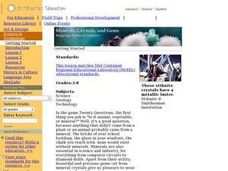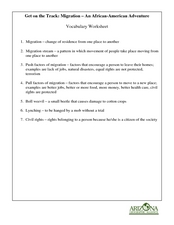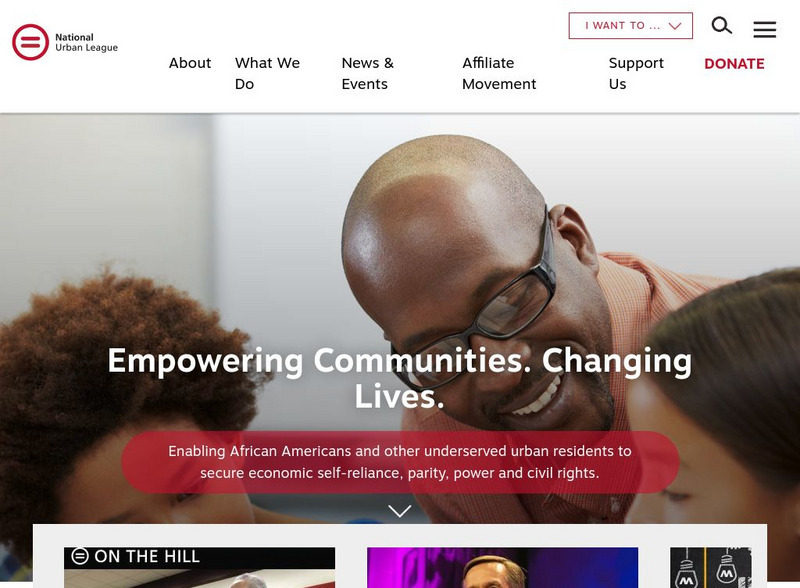Curated OER
Create a Classroom Exhibit: Rocks and Minerals
Students bring in rocks and minerals from home. They observe them and describe them carefully, completing a worksheet. Finally, a classroom exhibit is created.
Curated OER
Rocks and Minerals
Students bring rocks and minerals from home to investigate in the classroom. In this rocks and minerals lesson plan, students observe all the rocks and minerals brought into the class and answer 7 questions about the features of the...
Curated OER
The Life of Frederick Douglass
Students discuss the importance of effective leadership in a democratic society. They study the significance of the contributions of Frederick Douglass to America. They compare the effects of political, economic, and social factors on...
Curated OER
Minerals, Crystals, and Gems
Students discover the relationships between minerals, crystals and gems. They bring in rocks that they find at home, in the schoolyard, etc. and examine them and attempt to identify them. They set up a classroom exhibit that includes all...
Curated OER
Migration: An African American Adventure
Learners read the book, The Great Migration by National Geographic, then complete this set of related worksheets. They review vocabulary, complete five short answer questions, discuss push and pull factors for the migration, then write a...
CHPCS
The United States in the 1920s: The New Negro Movement and the Harlem Renaissance
Music, writing, and activism all tell the story of history! The resource uses these elements and more in a presentation to discuss the Jazz Age and Harlem Renaissance. Your class views biographies, discusses important events, and...
Curated OER
Tolerance in Times of Trial
Students view the treatment of people of Japanese and German descent during World War II. They explore the problems in assigning blame to populations during times of war. They identify modern examples of discrimination and stereotyping.
Curated OER
Plants and Animals: Partners in Pollination
Students describe the complementary relationships between pollinators and the plants they pollinate, identify adaptations that flowers have developed to "encourage" pollination, and create and draw their own "designer" flowers.
Curated OER
Going...going...gone? Tropical Rainforests-How They Work, What They Do for Us, What's Being Done to Them...
Sixth graders explore the Tropical Rainforest and come to understand what it is and how it affects the ecosystem. In this rainforests lesson, 6th graders write about the Tropical Rainforest, imagine they are in the Tropical Rainforest,...
Curated OER
Tracing the Route of Bracero
Students make a map showing the work of a Bracero Worker. In this Bracero lesson, students listen to a worker in an online oral history as he explains his work locations and crops. They use a map to plot the areas he worked and the crops...
Curated OER
Good Brother, Bad Brother
Studetns study how biographers create characters and history of individuals in biographies. They complete a variety of writting activities to demonstrate understanding.
Curated OER
How Things Fly
Students observe photographs of selected twentieth-century aircraft at the National Air and Space Museum and note differences in the design of aircraft wings, fuselages, and engines.
Curated OER
The Rocky Shore
Students compare a realistic landscape painting with a photograph of the same place.
Curated OER
Letters from the Japanese American Internment
Learners make deductions about life in an internment camp by reading and comparing letters written to Clara Breed. Along the way, they consider the advantages of looking at a historical event from the multiple points of view of...
Curated OER
Anna's Dilemma
Young scholars read a scenerio about people who lived in Germany during Nazi rule. As a class, they discuss the situations the character finds herself in and identify her responsiblities to her family. They answer discussion questions...
Other
National Urban League Home Page
The homepage of the National Urban League, whose mission "is to enable African Americans to secure economic self-reliance, parity and power and civil rights."
Virginia Historical Society
Virginia Historical Society: Conclusion: Did the Civil War End at Appomattox?
While the American Civil War officially ended at the Battle of Appomattox, Confederate sensibilities ran deep and it was not until the Civil Rights Movement in the 1950s and 1960s that blacks were able to fully assert their equality....
Digital History
Digital History: Postwar America: 1945 1960
Chapter focus on the political, social, and economic events following World War II. Examines both foreign and domestic issues, including the origins of the Cold War and Civil Rights movements.





















